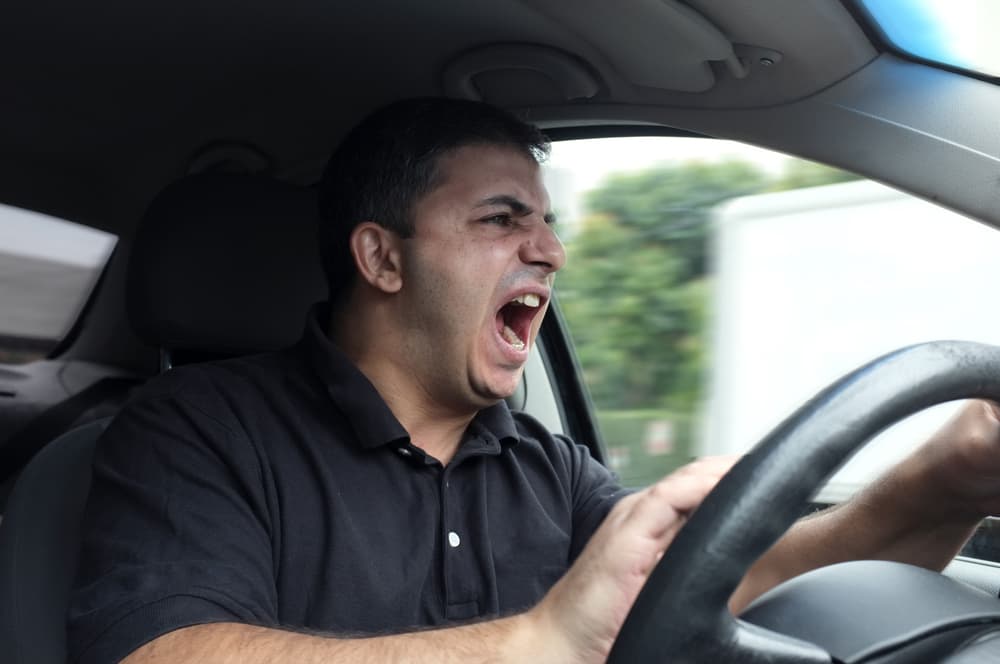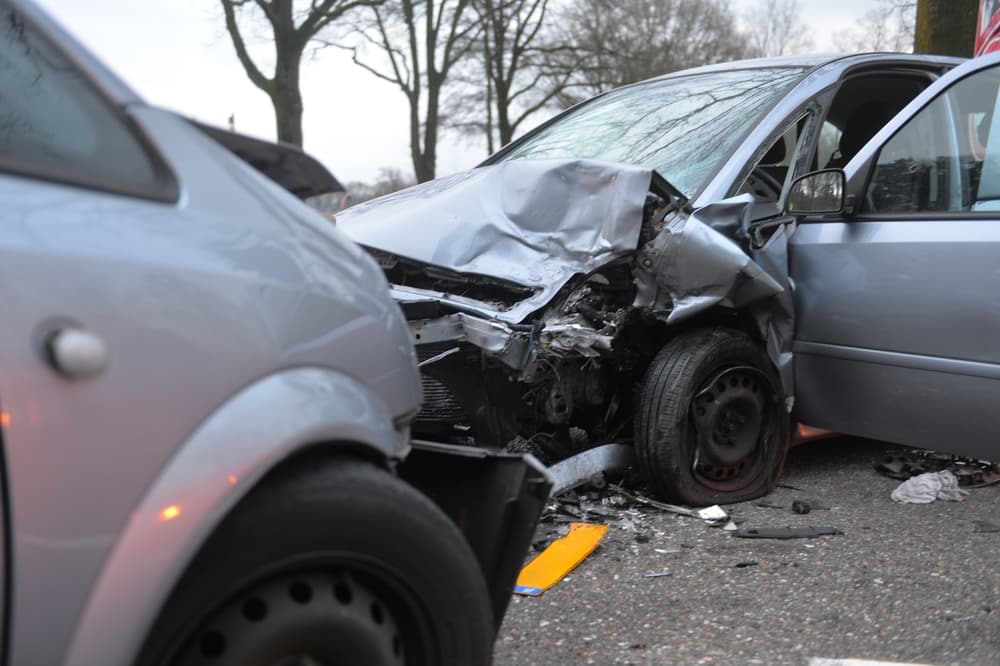Nearly every driver has felt some kind of anger or frustration while driving at least once in their lifetime. As a driver, you do not have complete control over what happens on the road, which is why you may end up in situations that make you clench your jaw and tighten your grip on the steering wheel.
Surveys show that about 80 percent of motorists admit to expressing their aggression behind the wheel at least once in the previous month. However, road rage is more than just feeling angry or frustrated behind the wheel. When road rage escalates into verbal expressions, physical acts or gestures, or unsafe driving maneuvers, it can endanger the lives of other road users and your passengers.
If you suffered injuries in a road rage accident, seek medical attention and immediately consult a California car accident lawyer about your options.
What Is Road Rage?

By definition, road rage is an act of assault committed with a motor vehicle or other dangerous “weapons” by the driver or passenger. In other words, road rage occurs when a driver responds uncontrollably and angrily to certain situations on the road or another driver’s actions.
While nearly every driver knows what it’s like to become frustrated while driving, not everyone actively and willfully puts others on the road in harm’s way to vent their anger. Particularly, people are more likely to engage in road rage when they:
- Had a bad day
- Are running late for work, an appointment, a meeting, or another time-sensitive event
- Had recently argued with another person, including their spouse or significant other
- Have kids misbehaving in the car
While everyone knows that venting your aggression through the vehicle may lead to devastating consequences, angry drivers have impaired judgment when they give into their emotions in the heat of the moment and may not fully comprehend the possible consequences.
Experienced car accident lawyers have seen many types of road rage cause serious injuries, and they are ready to help if an angry driver injures you.
Three Examples of Road Rage
While road rage can manifest itself in several ways, all behaviors that fit the definition of “road rage” can fall into one of the three categories below:
- Verbal expressions are any verbal acts in which a person expresses anger through words or yelling.
- Physical acts or gestures to show anger or frustration can often be obscene or threatening.
- Unsafe maneuvers are any driving actions that a driver purposefully performs to frustrate or intimidate other drivers.
In the sections below, we will review these three examples of road rage in detail. Regardless of whether the motorist’s actions are motivated by anger, impatience, or poor decision-making, road rage and aggressive driving are responsible for thousands of preventable accidents each year.
Verbal Expressions & Physical Acts or Gestures That Constitute Road Rage
The two common ways road rage manifests itself are verbal expressions and physical actions or gestures. Compared to unsafe maneuvers, they are less likely to lead to a collision but are still quite dangerous. Common examples of this form of road rage include:
- Shouting. Yelling at another driver is one of the classic signs of road rage, and many motorists consider it acceptable and even harmless. This can range from cursing at the other driver to loudly expressing frustration at their behavior. While it might feel good at the moment to vent annoyance at others on the road, this kind of behavior can escalate a situation quickly. The other driver might take the shouting as a challenge or a threat, presenting a dangerous situation.
- Making obscene or angry gestures. This can include things like making hand gestures to insult or intimidate. Similarly to shouting, making obscene or angry gestures can quickly escalate a situation.
- Excessive use of a horn. Honking your horn can be useful in certain situations, such as when you need to alert another driver to a danger or an emergency and prevent an accident. However, honking excessively or unnecessarily can be incredibly annoying to other drivers, and it can cause a lot of unwanted stress and tension on the road.
- Displaying weapons to intimidate other motorists. This is one of the most extreme examples of road rage, but unfortunately, it does happen quite often. If you feel threatened by another driver or want to intimidate them, the last thing you want to do is display a weapon or make any threatening gestures. This can quickly escalate the situation and lead to violence or other dangerous behaviors.
- Flashing headlights unnecessarily. Flashing your headlights can be useful in certain situations, such as if you want to signal that you are giving another driver way. However, using them excessively can be interpreted as a signal to move or to do something that might put them at risk.
- Throwing objects from the car. Another common example of a physical act while experiencing road rage is throwing objects at other motorists. These objects may include cups, bottles, coins, and anything a driver can find in their vehicle. Throwing objects from the car may be interpreted as assault and can lead to criminal charges.
Statistically speaking, 94 percent of critical reasons leading to motor vehicle accidents are attributable to the driver. Often, road rage may cause nothing but inconvenience to other drivers, but there are times when engaging in aggressive or angry behavior behind the wheel can lead to accidents that cause serious injuries or even deaths.
Unsafe Maneuvers That Constitute Road Rage
Car accidents are more likely to occur when road rage takes the form of hazardous driving maneuvers. When a driver is experiencing anger behind the wheel, they are likely to perform the following maneuvers either intentionally or inadvertently:
- Tailgating. Tailgating is not always a sign of road rage, as many drivers have this dangerous habit of leaving very little space between the vehicle in front of them. However, when tailgating becomes a driver’s expression of anger, this behavior typically involves following another vehicle too closely and also displaying aggressive or rude gestures to frustrate or intimidate the driver in front. If the driver in front applies the brakes abruptly, tailgating can lead to a rear-end collision.
- Speeding. Driving over the speed limit or too fast for road conditions is illegal and dangerous. Speeding is a leading cause of road rage incidents because it makes it harder for other drivers to anticipate your movements. Statistically speaking, speeding is a contributing factor in more than 18 percent of all fatal accidents in the United States.
- Running red lights or stop signs. Running red lights or stop signs is a severe traffic violation because it endangers you and other drivers on the road and can lead to devastating accidents. A motorist who is experiencing road rage and is trying to retaliate against another driver is likely to disregard traffic lights and road signs when they are blinded by their anger.
- Weaving in and out of traffic. The term “weaving” refers to changing lanes abruptly and erratically. It usually indicates impatience, frustration, or aggressive behavior and can cause collisions, especially if the traffic is heavy.
- Blocking lanes. Blocking cars attempting to pass or change lanes is a sure way to annoy other drivers. This behavior can lead to accidents if a driver forces other road users to swerve out of their way or leaves them insufficient space to avoid a collision.
- Passing on the shoulder or in the opposite lane. Using the shoulder of the road or the lane for oncoming traffic to pass other vehicles is a dangerous driving behavior that disrupts the orderly use of the road and can result in crashes, including head-on collisions with oncoming traffic.
- Driving slowly in the passing lane. The passing lane is for overtaking other vehicles, so when someone drives slowly, they hold up traffic and are likely to infuriate others. However, this behavior does not always constitute road rage, as drivers who lack experience or do not pay attention to the road may also drive slowly in the passing lane.
- Cutting other drivers off. This common example of road rage involves pulling in front of another vehicle without sufficient space or warning. Cutting someone off is an aggressive and dangerous driving behavior that increases the likelihood of accidents. This behavior can anger a driver and can be done purposefully to frustrate or seek revenge against someone on the road.
All these maneuvers are unsafe and can cause an accident, resulting in painful injuries, significant property damage, and unnecessary financial burdens.
Any purposeful conduct that causes injuries to you is unacceptable, and you should never wait to discuss the next steps with a car accident attorney.
What Causes Road Rage?
As mentioned earlier, some motorists are more likely to give in to the feeling of anger and rage on the road due to internal factors such as having a bad day or facing the pressure of being late. However, there are also a variety of external factors that can trigger road rage, including:

- Traffic jams. No one enjoys sitting in traffic jams for hours. The longer drivers are stuck in slowed or stopped traffic, the higher their anger levels rise. Being late and being stuck in a traffic jam is a recipe for disaster.
- Running late. Even if the driver is not stuck in a traffic jam, being late for work or other engagements increases the likelihood of experiencing road rage.
- Driving under the influence. Many people become more aggressive when they drink alcohol. For this reason, those who get behind the wheel while impaired by alcohol, which is a severe criminal offense in and of itself, are likely to drive aggressively.
- Other motorists’ maneuvers. In many cases, other motorists’ actions or maneuvers provoke a driver's road rage. For example, someone cutting a driver off can easily trigger an aggressive reaction, especially if the driver is already on edge.
- Anonymity. Many people feel anonymous in their cars, which often propels them to take actions they wouldn’t otherwise take outside the vehicle (e.g., shouting, cursing at other people, and showing rude gestures).
Regardless of what causes road rage, driving aggressively is never acceptable or excusable. The law requires all drivers to drive safely and responsibly and avoid doing anything that might put other road users in harm’s way.
Who Is at Fault in a Road Rage Accident?
In most accidents where road rage is a contributing factor, the driver who operates the vehicle aggressively or recklessly is likely to be at fault. That is because an aggressive driver’s actions usually directly or indirectly caused the accident. Let’s review two examples:
- Example #1. Driver A is running late for work but sees Driver B driving what Driver A perceives as “too slow.” Driver A begins honking excessively, flashing headlights, and tailgating Driver B to make Driver B give way. Eventually, Driver A’s vehicle rear-ends Driver B’s vehicle.
- Example #2. Driver A gets angry at Driver B for not giving him way on the road. As a result, Driver A begins to chase Driver B and eventually cuts him off, leaving very little space between the vehicles. Driver B swerves abruptly to avoid a collision with Driver A’s vehicle but ends up hitting another vehicle in an adjacent lane.
However, proving that the other driver was behaving aggressively or recklessly is not always easy unless there is clear evidence, such as surveillance camera footage or witness statements. In many cases, an in-depth investigation may be necessary to prove the other driver’s fault in a road rage crash and hold them responsible for your damages and losses. You need the right car accident lawyer to identify and prove fault in your case.
Consult a Car Accident Attorney in Your Area Today

Always hire a car accident lawyer to prove liability in a road rage accident and collect the necessary evidence to establish all four elements. The sooner you call a personal injury lawyer in California near you, the sooner your attorney can begin protecting your future. Consultations are free, and you can seek justice for any injuries you suffered due to road rage.


